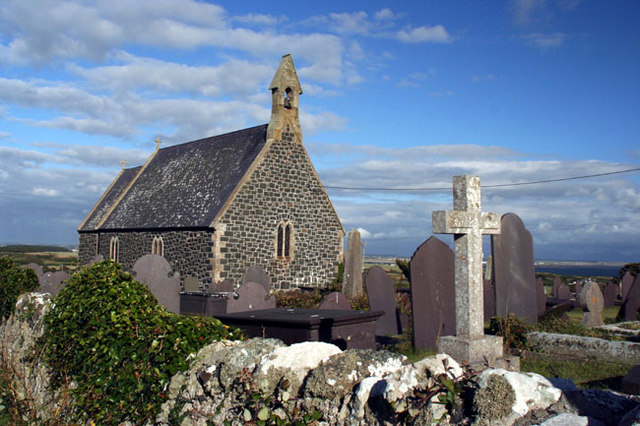I remember the first time I clapped eyes on the Llyn Peninsula from a distance, there was something about its romantic, mountainous shape shimmering on the horizon that made me want to go there. When I finally did go a few years later it didn't disappoint, and it now occupies a place on my list of favourite parts of the British coast. Clynnog Fawr is at the north-east end of the peninsula, and its main draw is one of the best known churches in Wales. Founded by St Beuno in the 7th century with the present building dating from the 16th century, the church was visited by pilgrims as they made their way to Bardsey Island just off the far end of the peninsula. Local farmers used to make a split in the ears of their lambs or calves, a feature known as 'Beuno's Mark', and they paid money to the church. The wooden trunk that held the money is still inside the church and is known as 'St Beuno's Chest'. South of the village by a roadside is St Beuno's Well, yielding up water once thought to have healing properties. After consuming the well's water, the hopeful sick used to complete the treatment by spending the night on the saint's tomb inside the church. The beach at Clynnog Fawr, reached by paths from the village, is stony, but with sandy patches and rockpools when the tide is out. Near the village is Dolmen (or Cromlech) Bachwen, a Neolithic burial chamber with a highly decorated capstone.
Map of the area.
 | |
| Cromlech Bach Wen - geograph.org.uk - 243519. Photo by Eric Jones, via Wikimedia Commons. |








